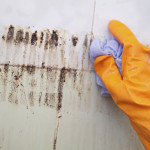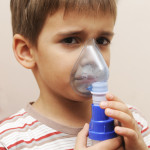SUMMERTIME MEANS DEEP CLEANING; WHY GO GREEN?
Deborah J. Young, Ph.D., Colorado Center for Integrated Pest Management
The Healthy Schools Campaign, a project that started in Illinois has done extensive research on the benefits of green cleaning for schools.

Green cleaning refers to using cleaning methods and products with environmentally friendly ingredients designed to preserve human health and environmental quality.
Why go green?
1. Green Cleaning Helps Students Stay Healthy and Learn:
EPA estimates that children miss more than 14 million school days each year due to asthma exacerbated by poor indoor air quality. Green cleaning can help reduce the environmental hazards produced from certain chemical combinations.
2. Green Cleaning Protects the Health of Custodial Staff:
Research shows that, six out of every 100 custodians are injured on the job each year. Choosing safer products and training staff in proper usage can help reduce the number of injuries caused by caustic chemicals, respiratory irritation, and inappropriate or dangerous equipment.
3. Green Cleaning Increases the Lifespan of Facilities:
Proper maintenance and effective cleaning extends the longevity and performance of school building materials and furnishing by preventing damage and premature aging. A square foot of typical carpet can hide as much as three times its weight in dirt and sand, which act like thousands of small knives, cutting and wearing our fibers in a few short years – long before its useful lifespan and before the district has budgeted to replace it.
4. Green Cleaning Preserves the Environment:
According to ISSA, the cleaning industry consumes six billion pounds of chemicals, including non-renewable natural resources such as petroleum, and generates 4.5 billion pounds of paper products, requiring the cutting of 35 million trees annually.
For more resources on Green Cleaning Check Out these links
The Quick + Easy Guide to Green Cleaning in Schools
Guide to Green Cleaning: Healthier Cleaning & Maintenance Practices and Products for Schools
NEA Health Information Network – Environmental Health – Cleaning, Sanitizing, and Targeted Disinfecting Fact sheets for classrooms, cafeterias, kitchens, athletic departments, and school buses.
EPA Green Cleaning, Sanitizing, and Disinfecting: A Toolkit for Early Care and Education
U.S. Department of Health & Human Services Household Products Database
IS IT SAFE TO USE CHLORINE BLEACH?
Household bleach is an effective disinfectant, works quickly, and is available at a low

The CDC recommends that you wash surfaces with a general household cleaner to remove germs, use bleach sparingly.
cost. Several schools and institutions have recently questioned its use. The active ingredient, sodium hypochlorite, denatures protein in microorganisms — killing bacteria, fungi, and viruses. The downside is that bleach irritates mucous membranes, skin, and airways, decomposes under heat or light, and reacts readily with other chemicals. Overuse of bleach, or using a bleach solution that is too concentrated, results in the production of toxic substances.
When handling relatively concentrated chlorine bleach right out of the container:
- Wear eye protection such as wrap-around safety glasses and/or goggles to avoid getting the bleach in your eyes.
- Wear rubber household gloves or nitrile gloves to avoid skin exposure.
- Wear clothing that will cover your skin in case of spills. At a minimum, wear a long-sleeved shirt, pants, socks, and shoes.
- Open the container and mix out-of-doors or in a very well-ventilated room to avoid a buildup of vapors, which can cause eye and/or respiratory irritation.
- Wash your hands vigorously with mild soap and water before you use the bathroom, eat, smoke or use smokeless tobacco.
Always follow label directions on cleaning products and disinfectants. The Centers for Disease Control and Prevention recommend that you wash surfaces with a general household cleaner to remove germs. Rinse with water, and follow with an EPA-registered disinfectant to kill germs. Read the label to make sure it states that EPA has approved the product for effectiveness against influenza A virus.
If an EPA-registered disinfectant is not available, use a fresh chlorine bleach solution. To make and use the solution: Add 1 tablespoon of bleach to 1 quart (4 cups) of water. For a larger supply of disinfectant, add ¼ cup of bleach to 1 gallon (16 cups) of water. Apply the solution to the surface with a cloth. Let it stand for 3 to 5 minutes. Rinse the surface with clean water.
News Advisory – Asthma Awareness Month Resources
David Bryan, US EPA Region 7
Asthma is a serious, sometimes life-threatening respiratory disease that affects the quality of life for millions of Americans. Although there is no cure for asthma yet, asthma can be controlled through medical treatment and management of environmental triggers.
May is Asthma Awareness Month. This is part of EPA’s ongoing effort to increase public awareness of the asthma epidemic and partner with thousands of organizations taking action to get asthma under control in communities across the nation. EPA promotes scientific understanding of environmental asthma triggers and management through research, education, and community-focused outreach. During Asthma Awareness Month, EPA encourages state and local asthma programs to hold community-based events to increase awareness of asthma triggers and the successful strategies for addressing asthma disparities.
Asthma afflicts about 20 million Americans, including 6.3 million children. Since 1980, the biggest growth in asthma cases has been in children under 5. Some of the most common indoor asthma triggers include secondhand smoke, dust mites, mold, cockroaches and other pests, household pets, and combustion byproducts.
“Improving air quality is one of EPA’s top priorities, and our commitment is stronger than ever during Asthma Awareness Month,” said Karl Brooks, EPA Region 7 administrator. “By working together with diverse partners in communities across our four-state region, we are making a real difference in the lives of people dealing with asthma.”
As part of Asthma Awareness Month, EPA Region 7 has put together a number of resources you might use to promote asthma awareness in your news stories and features.
Program References/Resources:
- General Asthma Information: http://www.epa.gov/asthma/index.html
- EPA Asma en Espanol: www.epa.gov/iaq/espanol/asma.html
- National Asthma Awareness Month: http://www.epa.gov/asthma/awareness.html
- Children’s Asthma Campaign – Fight Asthma, Learn More campaign: http://noattacks.org/
- Student Curriculum: Recipes for Healthy Kids and a Healthy Environment: http://yosemite.epa.gov/ochp/ochpweb.nsf/content/curriculum.htm
- Publications and Resources: http://www.epa.gov/asthma/publications.html
- Multimedia Resources (videos, audio, podcasts): http://www.epa.gov/asthma/multimedia.html
- Federal Partners and Expert Contacts: http://www.epa.gov/asthma/partners.html
- National Asthma Control Initiative (NACI): http://www.nhlbi.nih.gov/health/prof/lung/asthma/naci/
- Indoor AIRepair Kit, Allergy and Asthma Network/Mothers of Asthmatics – for home, school and play: http://www.aanma.org/publication/indoor-air-repair-kit/
- National Health Interview Survey (NHIS) Data: http://www.cdc.gov/asthma/nhis/default.htm
Quarterly Report from the TDA Structural Pest Control Advisory Committee
By Dr. Mike Merchant
The spring meeting of the Structural Pest Control Advisory Committee took place last Thursday at the Austin offices of the Texas Department of Agriculture. If you’ve never been to the hub of regulatory activity for pest control in the state, it’s a massive square building with a great view, from upstairs, of the “sunset red” granite of the state capitol building. This quarter’s lively meeting focused on enforcement actions–or what some in the industry feel is not enough enforcement action.
The discussion started with a report from Assistant General counsel AJ Wilson and her staff. They reported that the percent of cases referred to the enforcement team that resulted in enforcement action has seen a slight increase. Last year 54.4% of complaints resulted in some sort of enforcement action, such as a fine. This was up from 43% and 44% in 2010 and 2011. Warren Remmey, industry member from San Antonio, expressed concerns about a need for more investigators, especially for checking up on illegal fumigations. He shared an example of a case from 2013, concerning an unmarked vehicle allegedly carrying fumigation equipment that has still not resulted in any enforcement action.
Later in the meeting, during the public comment period, Debbie Aguirre, of Elite Exterminating in Corpus Christi, expressed concern about what she termed “lax oversight” of illegal operators. “And no place is enforcement more important than fumigations,” she said. Harvey West with Coastal Fumigators in Houston echoed her concerns, expressing his belief that there was benefit to the whole industry and regulators in making examples of people who were blatantly in violation of the law with respect to fumigations. Dale Burnett, former regulator, spoke on behalf of Worldwide Pest Control in San Antonio, noted that administrative penalties during the latter years of the Structural Pest Control Board averaged $100,000 to $200,000 annually. According to a recent Open Records Act request, last year the TDA collected only $20,087 in penalties, though penalties have been increasing, with a more than 230% increase since 2011.
If it seems unusual for industry members to ask a regulatory agency for more fines and enforcement actions, it probably is. But the pest control industry in Texas is not just any industry. It is sensitive to its reputation, and leading business owners are often split on the need for more, or less, enforcement. Only a few years ago, industry voices were heard in Austin about perceived overly-zealous enforcement, which ultimately led to the closing of the Structural Pest Control Board and its blending into the Department of Agriculture. Most industry leaders are especially sensitive to the issue of unlicensed operators, however, and few reputable pest control operators seem to begrudge quick and decisive action against businesses that threaten public health and the reputation of the industry. For its part, the TDA team listened respectfully. Policy dictates that they not comment on ongoing investigations, so there was no opportunity for them to respond to critical comments, only listen.
In other business, Randy Rivera reported on upcoming changes to regulations affecting pesticide applicators holding Agriculture (3A) licenses. Most of the proposed changes will be administrative updates, and designed to harmonize TDA and Structural pest control regulations. Definitions for Lawn and Ornamental (formerly Plant and Turf), Nursery Plant Production (formerly Greenhouse Plant Production) and Landscape Maintenance (formerly Plant Pest and Weed Control) categories have been added to the rules. There will also be a new proposed rule requiring TDA decals (not numbers) on vehicles being used by non-commercial applicators, including those who use non-restricted use insecticides. If you carry a TDA applicator’s license, you should expect to see publication of these proposed regulation changes in the Texas Register by mid-May.
The status of continuing education regulations for school IPM coordinators was requested, and the committee was informed that the proposed rules outlining CEU requirements should come out as a package in May with the other proposed (3A) regulation changes. State law mandates that school IPM coordinators begin obtaining 6 CEUs every three years, but enforcement of the law cannot take place until actual rules are in place. Janet Hurley, my colleague at Texas A&M AgriLife Extension who works with school IPM programs, also offered a comment on the need to waive the 48 hour posting requirement for insecticide baits and gels. This would take the regulations back to an earlier standard, under the rationale that baits and gels, unlike sprays, pose little or no drift hazard to passersby.
The next meeting will be held July 24 at TDA headquarters in Austin. Anybody with an interest in pest control is welcome to attend.


 .
.